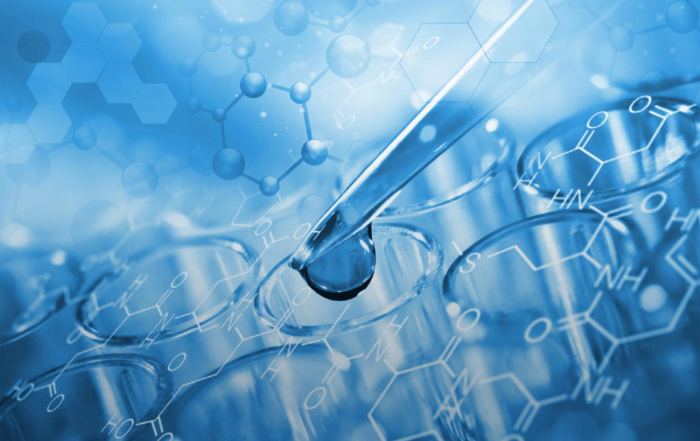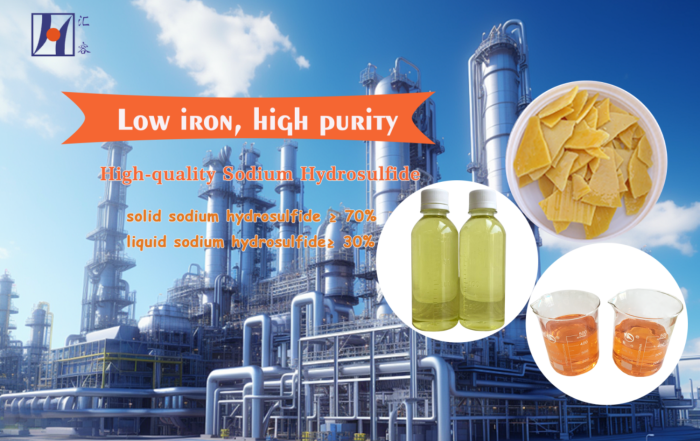Industrial sodium hydrosulfide is an important inorganic chemical raw material with a chemical formula of Na2S. It is also called sulfide, stinky soda or stinky alkali.
Industrial sodium hydrosulfide usually appears as pink, brownish red or khaki blocks due to impurities. It has a rotten egg smell and is corrosive and toxic. The density is about 2.427 g/mL, the melting point is 950°C, and it decomposes at 920°C. It is soluble in cold water, easily soluble in hot water, slightly soluble in ethanol, and insoluble in ether. It reacts with acid to produce hydrogen sulfide. It is deliquescent in the air and easily oxidized to produce sodium thiosulfate. The aqueous solution is strongly alkaline and corrosive to copper, wood, skin, etc.
Industrial sodium hydrosulfide has a wide range of applications and plays an important role in many industries, including the printing and dyeing industry; dye industry; pharmaceutical industry; electroplating industry; leather industry and sewage treatment.
Since sodium hydrosulfide is corrosive and toxic, what should be done if poisoning occurs during the manufacturing or use of sodium hydrosulfide?
How To Prevent Sodium Hydrosulfide Poisoning?
1) Personal protection: When using sodium hydrosulfide, wear appropriate personal protective equipment, including protective gloves, protective clothing, protective goggles and protective masks to avoid direct contact with sodium hydrosulfide.
2) Avoid inhalation: Do not inhale dust, smoke, gas, mist, vapor or spray.
3) Cleaning after operation: Clean thoroughly after operation to remove sodium hydrosulfide that may be contaminated on the skin.
4) Workplace regulations: Do not eat, drink or smoke when using sodium hydrosulfide to prevent accidental ingestion.
5) Storage safety: Store sodium hydrosulfide in a well-ventilated, dry and light-proof place, and avoid mixing with other toxic chemicals.
6) Emergency preparation: In the environment where sodium hydrosulfide is used, necessary first aid equipment such as first aid kits and mouth-to-mouth respirators should be prepared in case of emergency.
7) Environmental control: The workplace should be separated from other workplaces, closed operation, leakage prevention, and ventilation should be strengthened.
8) Engineering control: Automatic alarm devices and accident ventilation facilities should be set up, emergency evacuation channels and necessary risk relief areas should be set up, and safe showers and eyewash equipment should be provided.
9) Avoid release to the environment: Sodium hydrosulfide should be avoided from being released into the environment to reduce the risk to the environment and human health.
10) Safe storage: The storage place must be locked, and there should be gaps between the stacks or pallets for separate storage.
How To Deal With Sodium Hydrosulfide Poisoning?
1) Avoid further contact: Quickly transfer the poisoned person to a well-ventilated place, away from the source of sodium hydrosulfide.
2) Respiratory management: For those poisoned by high-concentration sodium hydrosulfide gas, respiratory management should be strengthened. Artificial respiration and cardiopulmonary resuscitation should be performed immediately on unconscious patients.
3) Stomach cleaning: The poisoned person is given an injection of saline to clean the stomach. In addition, a large amount of saline solution needs to be infused into the stomach of the poisoned person to remove the residual sodium hydrosulfide.
4) Emergency evacuation: Evacuate the poisoned person quickly to a well-ventilated, non-toxic place, and ensure that they are away from the source.
5) Emergency ventilation: If the poisoned person has difficulty breathing or stops breathing, artificial respiration should be performed immediately. When performing artificial respiration, pay attention to tilting the patient’s head up, opening the mouth, holding the nose with one hand, pinching the mouth with the other hand, and injecting air for breathing. At the same time, mouth-to-mouth or mouth-to-nose breathing can be used.
6) Call the emergency number immediately: When symptoms of poisoning are found, call the local emergency number immediately and tell the emergency personnel the cause of the poisoning so that they can prepare in advance.
7) Send to the hospital: The poisoned person should be sent to the hospital for treatment immediately. During the transportation process, the patient’s airway should be kept open as much as possible.
8) Detoxification with drugs: After entering the hospital, the doctor will immediately perform rescue treatment. Commonly used drug antidotes include amyl nitrite, medetomidine, sulfenamide, etc.
9) Skin contact treatment: Immediately rinse with plenty of clean water for at least 15 minutes, and seek medical attention immediately.
10) Eye contact treatment: Immediately rinse with plenty of clean water for at least 15 minutes, including under the eyelids. If it enters the eyes, rinse immediately with plenty of clean water and seek medical attention.
11) Inhalation treatment: Move to a place with fresh air. If breathing stops, perform artificial respiration. If the patient ingests or inhales the substance, do not use the mouth-to-mouth method; use a pocket-type breathing mask equipped with a one-way valve or other appropriate respiratory medical device for artificial respiration. Seek medical attention immediately.
12) Ingestion treatment: Do not induce vomiting, because sodium hydrosulfide is a corrosive substance and vomiting may cause further harm.
13) Use of glucocorticoid drugs: Use glucocorticoid drugs such as prednisone acetate tablets and dexamethasone tablets under the guidance of a doctor to relieve discomfort.




